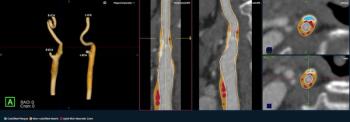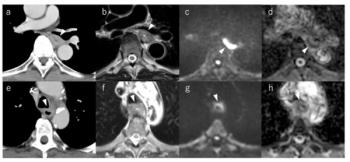
CT Angiography Detects Cerebral Aneurysms
Non-invasive CT angiography effectively detects cerebral aneurysms and should be considered for first-line imaging.
CT angiography should be the first-line imaging technique for the noninvasive evaluation of aneurysms, according to a study published in the journal
Researchers from China undertook a study to assess the accuracy of 320-detector row CT angiography for detection of cerebral aneurysms compared with 3D digital subtraction angiography (DSA). A total of 282 patients (138 men, 144 women) were assessed.
Mean age was 58 years. The patients underwent CT angiography with 320-detector row volumetric CT scanner and 3D rotational DSA. The researchers evaluated sensitivity, specificity, and accuracy of nonsubtracted and subtracted volumetric CT angiography for depiction of aneurysms.
Results showed that 3D DAS detected 239 cerebral aneurysms among 198 patients. The CT angiography showed 231 of the aneurysms (96.7 percent). The researchers noted that aneurysms that were missed were generally proximal to bone tissue. Sensitivity, specificity, and accuracy of subtracted volumetric CT angiography for depicting aneurysms were 99.2 percent, 100 percent, and 99.4 percent, respectively, on a per-aneurysm basis.
“Subtracted 320–detector row volumetric CT angiography provides excellent sensitivity for detection of cerebral aneurysms and should be the first-line imaging technique for the noninvasive evaluation of aneurysms,” the authors wrote.
Newsletter
Stay at the forefront of radiology with the Diagnostic Imaging newsletter, delivering the latest news, clinical insights, and imaging advancements for today’s radiologists.






























